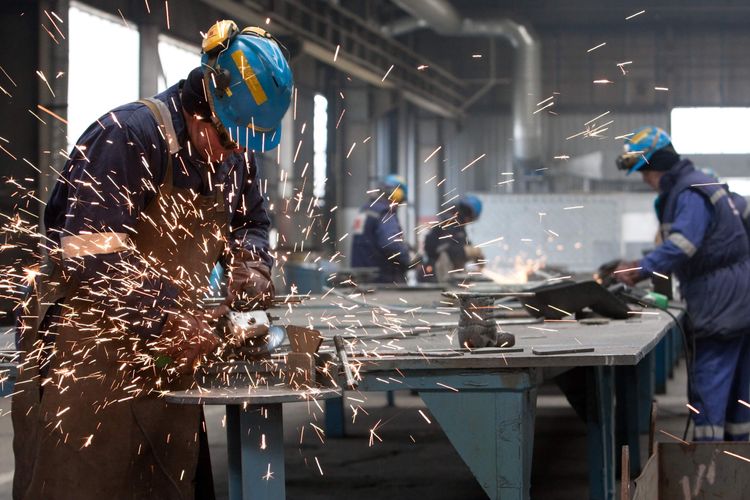The entire process of converting raw materials into finished stainless steel is quite a lengthy one, but it can be simplified and broken down into six primary steps. Let’s look at these interesting steelmaking process steps.
1. Producing iron
Iron ore, when mined, is a combination of iron with oxygen and several other unwanted substances, which are known as gangue. To produce pure steel, the products that are involved in the steel making process (such as iron ore, coke and lime) must be converted into iron. All these raw materials are placed in a blast furnace and Corex furnace and further melted down to produce hot metal or molten iron. Besides bulk iron ore, prepared burden (such as sinter and pellets) is also fed into the furnace. At this point too, the iron contains several impurities, which need to be removed to make sure that the metal is not brittle. To achieve this, metallic iron is then passed to the steelmaking process as a liquid at nearly 1450°C. This iron is known as hot metal or pig iron.
2. Primary steelmaking
During the process of refining iron to produce steel, the carbon content of hot metal is successfully lowered, generally to less than 1% through an oxidation process in a BOF or Basic Oxygen Steelmaking Furnace. Post completion of this, alloys are added to the furnace to attain the needed chemical composition of the end product in a Ladle Refining Furnace. The content of chemicals is controlled very meticulously during this stage. Previously, most steels were produced through processes such as the bessemer and open Hearth. But these have now been replaced by ultramodern processes such as basic oxygen steelmaking. To remove all impurities, the molten metal is further infused with scrap steel. Oxygen too will be forced through the furnace, which gets rid of carbon and several other impurities. When it comes to electric furnaces, electricity needs to be forced through the furnace, achieving identical results. De-gassing is the ultimate step in steelmaking, wherein all the gaseous particles are eventually removed in the presence of a vacuum atmosphere. After completion of this process, we now have raw steel.





 +91 7208055523
+91 7208055523
 Help & support
Help & support
